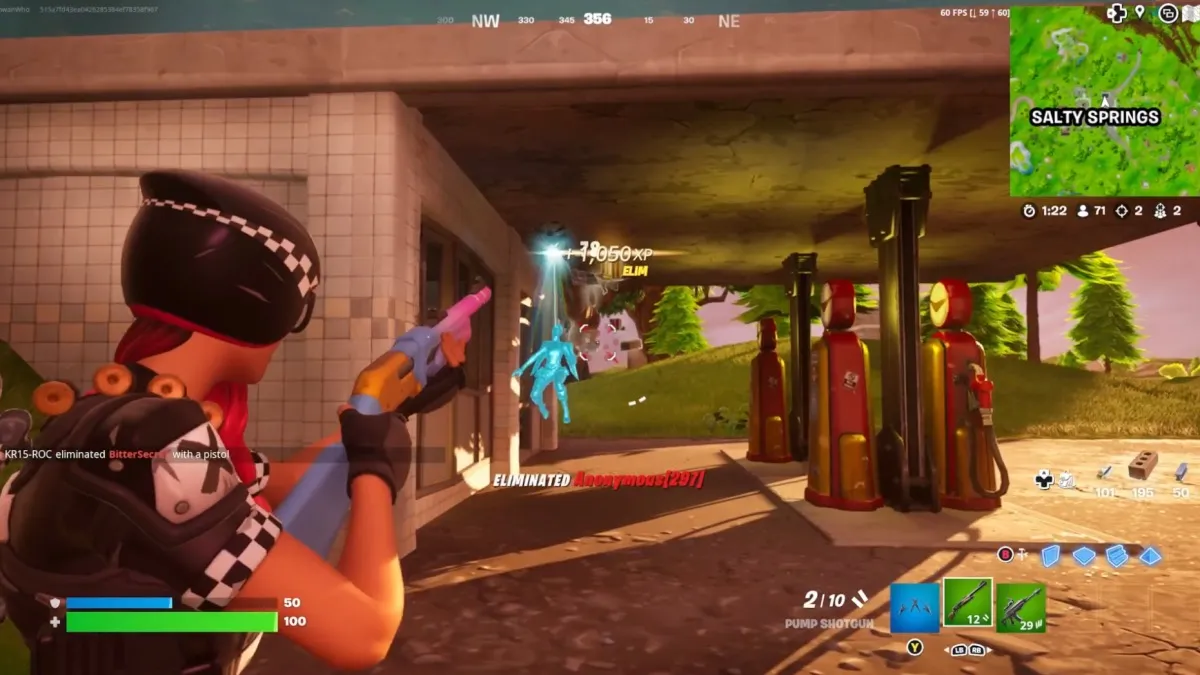
Editor’s note: All prices listed in this feature are from Amazon.com unless specified otherwise.
4K gaming is here and it is destined to be the golden standard of graphical fidelity moving forward. Sony went first with its PS4 Pro, and Microsoft is soon to arrive with its uber powerful Xbox One X. Both consoles have souped up performance, but to get the most out of them, you’re going to need a 4K display.
Unfortunately, that isn’t as easy as it ought to be. 4K, HDR, UHD, Quantum dot, color gamut; the electronics industry wants everyone on board with the latest technology, but the buzzwords aren’t exactly consumer-friendly.
Fear not! Twinfinite has you covered with a breakdown of the five best 4K televisions for gaming. Before we dive in, though, it’s worth quickly reminding ourselves exactly what defines a good gaming television.
Low input lag is an absolute must. Input lag is the delay between executing an action and how quickly that is then represented on the TV. We’re talking milliseconds here, but that can make all the difference in how responsive the game feels. It’s especially important for fast-paced shooters such as Call of Duty and Battlefield.
The above rules work similarly for 4K as they did for 1080p TVs, though things are made slightly more complicated by the extra demands of High Dynamic Range (HDR). HDR is another big game changer. It dramatically improves the range of light to dark shades in a given image’s color palette, producing a more vivid picture quality. If a non-HDR TV’s picture was represented as a single image, HDR would be like three separate identical images overlaid on top of each other. Because each of these images is dedicated to a different level of contrast, combining them produces a deeper, contrasted final image with much more clarity than normal HD.
Unsurprisingly, HDR means more work for the TV and a higher input lag as result. It’s worth noting that while most TVs will feature a “game mode,” this mode sometimes excludes the HDR function in favor of a lower input lag. Up until recently, there have been very few affordable 4K televisions that boast both HDR and a super low input lag.
So with that out of the way, let’s dive into our picks for the five best 4K TVs for gaming.
TCL P607 P Series
$649 (55 inches)

- Peak HDR Brightness: 600 nits
- Panel Type: VA
- HDR Support: Yes
- Input Lag: 16ms
- Size Options: 55, 65
Although 4K TVs are rapidly becoming more affordable, they still aren’t exactly cheap. Luckily, the TCP’s P607 is not only one of the best gaming 4k HDR TVs on the market, it comes in reasonable price point, too, and includes Dolby Vision support.
I mentioned earlier the importance of low input lag for gaming TVs, and this is the P607’s biggest asset. Sporting an exceptionally low 16ms of latency, the P607 is unrivaled in response time. There is also very little motion blur, which gives a clear image free of any annoying trail.
The P607 LED TV is accomplished beyond its low latency, though, boasting excellent picture quality thanks to its outstanding contrast ratio and black uniformity. The depth of black is impressive, indeed, and in combination with an above average peak brightness, the TV works well even when glare becomes an issue. The HDR functionality also looks superb, benefitting from wide color gamut, great HDR peak brightness, and a decent local dimming feature.
The P607’s only major drawback is that its picture does suffer slightly when viewed from an angle. For the price, though, the P607 is totally unmatched in quality. It really is a true contender to all but the most extravagant TVs, most of which are three times its price.
Samsung KS8000
$1497 (55 inches)

- Peak HDR Brightness: 1000 nits
- Panel Type: VA
- HDR Support: UHD Premium
- Input Lag: 21ms
- Size Options: 55, 65
Samsung’s commitment to low input lag has long made it a go-to choice for gaming TVs, and the KS8000 is its crowning achievement to date. Despite its relative affordability, the KS8000 offers native 4K resolution and boasts UHD certified HDR thanks to a hugely impressive 1000 nits of brightness. It also benefits from Samsung’s Quantum Dot technology to help produce an extended color palette, combining with local dimming technology to improve its contrast performance and produce terrific HDR results.
The picture quality on the KS8000 is generally superb, though not quite as sharp as money-no-object premium options. In particular, it suffers from a slightly narrow viewing angle and features an edge LED lighting system rather than a direct one, which can cause some occasional vague vertical bars of light to appear around very bright HDR objects if they appear against dark backgrounds. What it does do even better than the most expensive TVs, however, is combine accomplished fidelity with a stunningly low input lag of 21ms.
The KS8000 is a reasonably affordable, near premium TV that should be fairly future-proof for many years to come. Samsung certainly has more expensive options, but the KS8000’s low input lag, screen quality, and price make it their best overall TV for gaming.
LG OLEDB6P
$1997 (55 inches)

- Peak HDR Brightness: 700+ nits
- Panel Type: OLED
- HDR Support: UHD Premium
- Input Lag: 33ms
- Size Options: 55, 65
For a truly premium 4K HDR experience, you’ll have to shell out a little more, but if that isn’t a concern, then the B6P series from LG is the one. OLED screens are typically extremely expensive, but LG’s B6P has been steadily dropping in price.
The wafer-thin screen uses self-lighting pixel technology, delivering an unrivaled standard of black and color reproduction and an extremely wide color gamut. That means inky blacks, perfectly presented grayscale, and clean motion – in fact, there is almost no motion blur at all – that no LCD or LED can match.
It should be noted that while its peak brightness of over 700 nits is not as high as Samsung’s KS8000, OLED screens require just 500 nits to be considered UHD premium rather than the 1000 for LED screens.
Input lag was a relatively high 50ms when HDR is enabled, but LG has recently released a patch to lower latency to around 33 ms. Sure, that isn’t the ultra low-mid 20 ms latency of Samsung, but the screen quality more than makes up for this minor disparity. You’re also not going to have any issues with viewing from a wide angle as is present with the KS8000.
LG C7 OLED
$2496 (55 inches)

- Peak HDR Brightness: 690 nits
- Panel Type: OLED
- HDR Support: UHD Premium
- Input Lag: 21ms
- Size Options: 55, 65
Although the B6P is an accomplished TV, for the ultimate top shelf LG, the 2017 C7 is an absolute monster. This is LG’s most capable hardware, offering low input lag as well as the sublime quality of picture one would expect from an OLED screen. Indeed, input lag measures an ultra-responsive 21ms in Game mode, and blacks remain deep, even in HDR games. Dark objects moving across the screen over a lighter background is also free of smearing and trailing, unlike some LED LCD TVs with slower pixel response time.
What really makes OLED TV’s shine, though, is their picture clarity and ability to contrast bright white and deep inky blacks, and the C7 excels in this department. The self-emissive technology boasted by OLED screens means that every pixel can be turned on and off independently of one another, which equates to stunning contrasts and ultra clear clarity in definition. So while the C7 doesn’t quite boast the peak HDR brightness of Samsung’s KS8000, the nature of the OLED design means that its contrast still produces the same effect as a higher total on a LED screen. Another huge benefit of OLED technology is the increased viewing angle, and the C7 excels from even acute angles where LED TVs would see a sharp decline in fidelity.
The fact that the input lag is among the lowest available making games in combination with picture quality of this level makes the C7 among the elite of gaming TVs.
Sony A1E OLED
$3498 (55 inches)

- Peak HDR Brightness: 700 nits
- Panel Type: OLED
- HDR Support: UHD Premium
- Input Lag: 40ms
- Size Options: 55, 65
Bravia technology used to be the pinnacle of television fidelity, but the Japanese giant slipped slightly in the face of tough competition in recent years. In 2017, however, Sony is returning to form with some superb premium TVs. The best of this purple patch is the 2017 A1E, an OLED TV which might not only be the best Sony has ever made, it might just be the best 4K HDR TV, period.
Sony’s Bravia lineage always enjoyed a reputation for beautiful screen quality, but input lag has blighted modern offerings from a gaming perspective. The A1E, though, not only represents Sony’s most accomplished picture quality they have ever produced, the input lag is also much improved over previous models.
The picture quality of the really is exceptional. Perfectly deep and uniformed blacks juxtapose the wide range of its HDR color pallet, which then combines with smooth gradients for outstanding quality. Its motion capabilities are also excellent with absolutely no trails follow moving objects. If you have the money, no PS4 Pro or Xbox One game is going to look better than on the A1E, even if input lag is a little higher than its rivals.













Updated: Jun 28, 2017 05:45 pm